Here are some theoretical and practical contributions to the answers given, in case people arrive here who wonder what implements / interfaces are about.
As we know, VBA doesn't support inheritance, hence we might almost blindly use interfaces to implement common properties/behaviour across different classes.
Still, I think that it is useful to describe what the conceptual difference is between the two to see why it matters later on.
- Inheritance: defines an is-a relationship (a square is-a shape);
- Interfaces: define a must-do relationship (a typical example is the
drawable interface that prescribes that drawable object must implement the method draw). This means that classes originating from different root classes can implement common behaviour.
Inheritance means that a baseclass (some physical or conceptual archetype) is extended, whereas interfaces implement a set of properties/methods that define a certain behaviour.
As such, one would say that Shape is a base class from which all other shapes inherit, one that may implement the drawable interface to make all shapes drawable. This interface would be a contract that guarantees that every Shape has a draw method, specifying how/where a shape should be drawn: a circle may - or may not - be drawn differently from a square.
class IDrawable:
'IDrawable interface, defining what methods drawable objects have access to
Public Function draw()
End Function
Since VBA doesn't support inheritance, we are automatically forced to opt for creating an interface IShape that guarantees certain properties/behaviour to be implemented by the generic shapes (square, circle, etc), rather than creating an abstract Shape baseclass from which we can extend.
class IShape:
'Get the area of a shape
Public Function getArea() As Double
End Function
The part where we get in trouble is when we want to make every Shape drawable.
Unfortunately, since IShape is an interface and not a base class in VBA, we cannot implement the drawable interface in the base class. It appears that VBA does not allow us to have one interface implement another; after having tested this, the compiler doesn't seem to provide the desired behaviour. In other words, we cannot implement IDrawable within IShape, and expect instances of IShape to be forced to implement IDrawable methods because of this.
We are forced to implement this interface to every generic shape class that implements the IShape interface, and luckily VBA allows multiple interfaces to be implemented.
class cSquare:
Option Explicit
Implements iShape
Implements IDrawable
Private pWidth As Double
Private pHeight As Double
Private pPositionX As Double
Private pPositionY As Double
Public Function iShape_getArea() As Double
getArea = pWidth * pHeight
End Function
Public Function IDrawable_draw()
debug.print "Draw square method"
End Function
'Getters and setters
The part that follows now is where the typical use / benefits of an interface come into play.
Let's start off our code by writing a factory that returns a new square. (This is just a workaround for our inability to send arguments directly to the constructor):
module mFactory:
Public Function createSquare(width, height, x, y) As cSquare
Dim square As New cSquare
square.width = width
square.height = height
square.positionX = x
square.positionY = y
Set createSquare = square
End Function
Our main code will use the factory to create a new Square:
Dim square As cSquare
Set square = mFactory.createSquare(5, 5, 0, 0)
When you look at the methods that you have at your disposal, you'll notice that you logically get access to all the methods that are defined on the cSquare class:

We'll see later on why this is relevant.
Now you should wonder what will happen if you really want to create a collection of drawable objects. Your app could happen to contain objects that aren't shapes, but that are yet drawable. Theoretically, nothing prevents you from having an IComputer interface that can be drawn (may be some clipart or whatever).
The reason why you might want to have a collection of drawable objects, is because you may want to render them in a loop at a certain point in the app lifecycle.
In this case I will write a decorator class that wraps a collection (we'll see why).
class collDrawables:
Option Explicit
Private pSize As Integer
Private pDrawables As Collection
'constructor
Public Sub class_initialize()
Set pDrawables = New Collection
End Sub
'Adds a drawable to the collection
Public Sub add(cDrawable As IDrawable)
pDrawables.add cDrawable
'Increase collection size
pSize = pSize + 1
End Sub
The decorator allows you to add some convenience methods that native vba collections don't provide, but the actual point here is that the collection will only accept objects that are drawable (implement the IDrawable interface). If we would try to add an object that is not drawable, a type mismatch would be thrown (only drawable objects allowed!).
So we might want to loop over a collection of drawable objects to render them. Allowing a non-drawable object into the collection would result in a bug. A render loop could look like this:
Option Explicit
Public Sub app()
Dim obj As IDrawable
Dim square_1 As IDrawable
Dim square_2 As IDrawable
Dim computer As IDrawable
Dim person as cPerson 'Not drawable(!)
Dim collRender As New collDrawables
Set square_1 = mFactory.createSquare(5, 5, 0, 0)
Set square_2 = mFactory.createSquare(10, 5, 0, 0)
Set computer = mFactory.createComputer(20, 20)
collRender.add square_1
collRender.add square_2
collRender.add computer
'This is the loop, we are sure that all objects are drawable!
For Each obj In collRender.getDrawables
obj.draw
Next obj
End Sub
Note that the above code adds a lot of transparency: we declared the objects as IDrawable, which makes it transparent that the loop will never fail, since the draw method is available on all objects within the collection.
If we would try to add a Person to the collection, it would throw a type mismatch if this Person class did not implement the drawable interface.
But perhaps the most relevant reason why declaring an object as an interface is important, is because we only want to expose the methods that were defined in the interface, and not those public methods that were defined on the individual classes as we've seen before.
Dim square_1 As IDrawable

Not only are we certain that square_1 has a draw method, but it also ensure that only methods defined by IDrawable get exposed.
For a square, the benefit of this might not be immediately clear, but let's have a look at an analogy from the Java collections framework that is much clearer.
Imagine that you have a generic interface called IList that defines a set of methods applicable on different types of lists. Each type of list is a specific class that implements the IList interface, defining their own behaviour, and possibly adding more methods of their own on top.
We declare the list as follows:
dim myList as IList 'Declare as the interface!
set myList = new ArrayList 'Implements the interface of IList only, ArrayList allows random (index-based) access
In the above code, declaring the list as IList ensures that you won't use ArrayList-specific methods, but only methods that are prescribed by the interface. Imagine that you declared the list as follows:
dim myList as ArrayList 'We don't want this
You will have access to the public methods that are specifically defined on the ArrayList class. Sometimes this might be desired, but often we just want to take benefit of the internal class behaviour, and not defined by the class specific public methods.
The benefit becomes clear if we use this ArrayList 50 more times in our code, and suddenly we find out that we're better off using a LinkedList (which allows specific internal behaviour related to this type of List).
If we complied to the interface, we can change the line:
set myList = new ArrayList
to:
set myList = new LinkedList
and none of the other code will break as the interface makes sure that the contract is fulfilled, ie. only public methods defined on IList are used, so the different types of lists are swappable over time.
A final thing (perhaps lesser known behaviour in VBA) is that you can give an interface a default implementation
We can define an interface in the following way:
IDrawable:
Public Function draw()
Debug.Print "Draw interface method"
End Function
and a class that implements the draw method as well:
cSquare:
implements IDrawable
Public Function draw()
Debug.Print "Draw square method"
End Function
We can switch between the implementations the following way:
Dim square_1 As IDrawable
Set square_1 = New IDrawable
square_1.draw 'Draw interface method
Set square_1 = New cSquare
square_1.draw 'Draw square method
This is not possible if you declare the variable as cSquare.
I can't immediately think of a good example when this might be useful, but it is technically possible if you test it.




